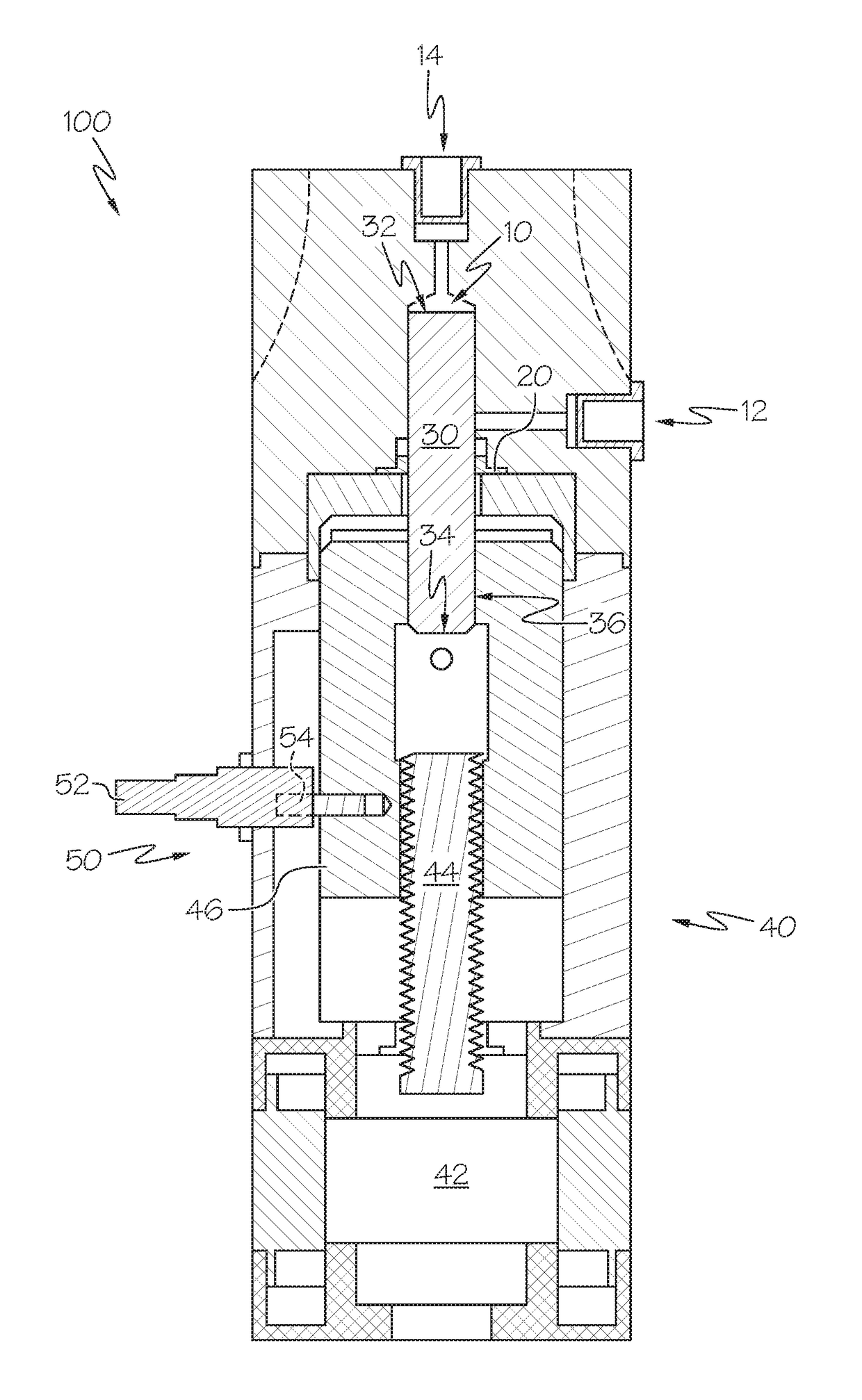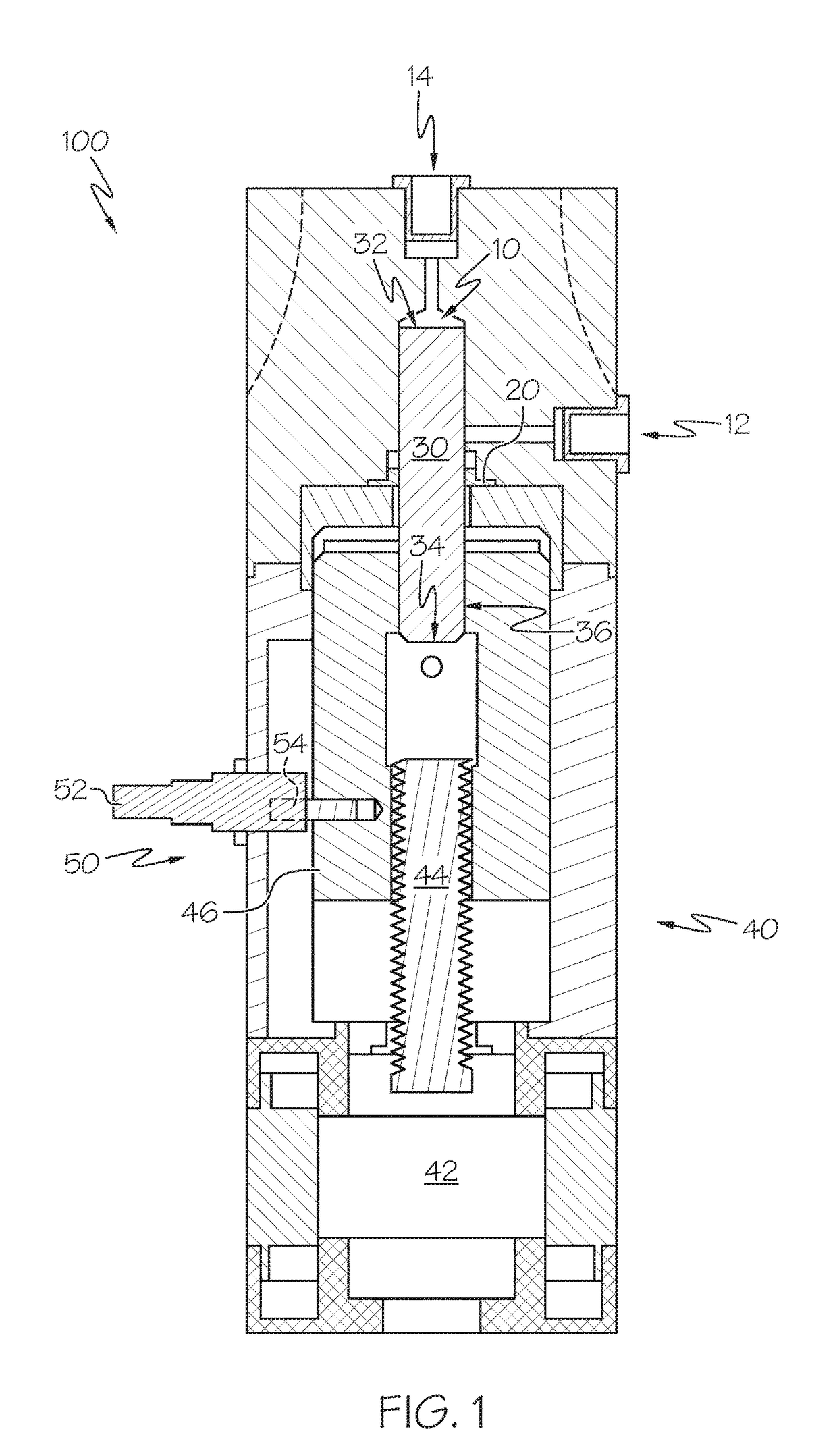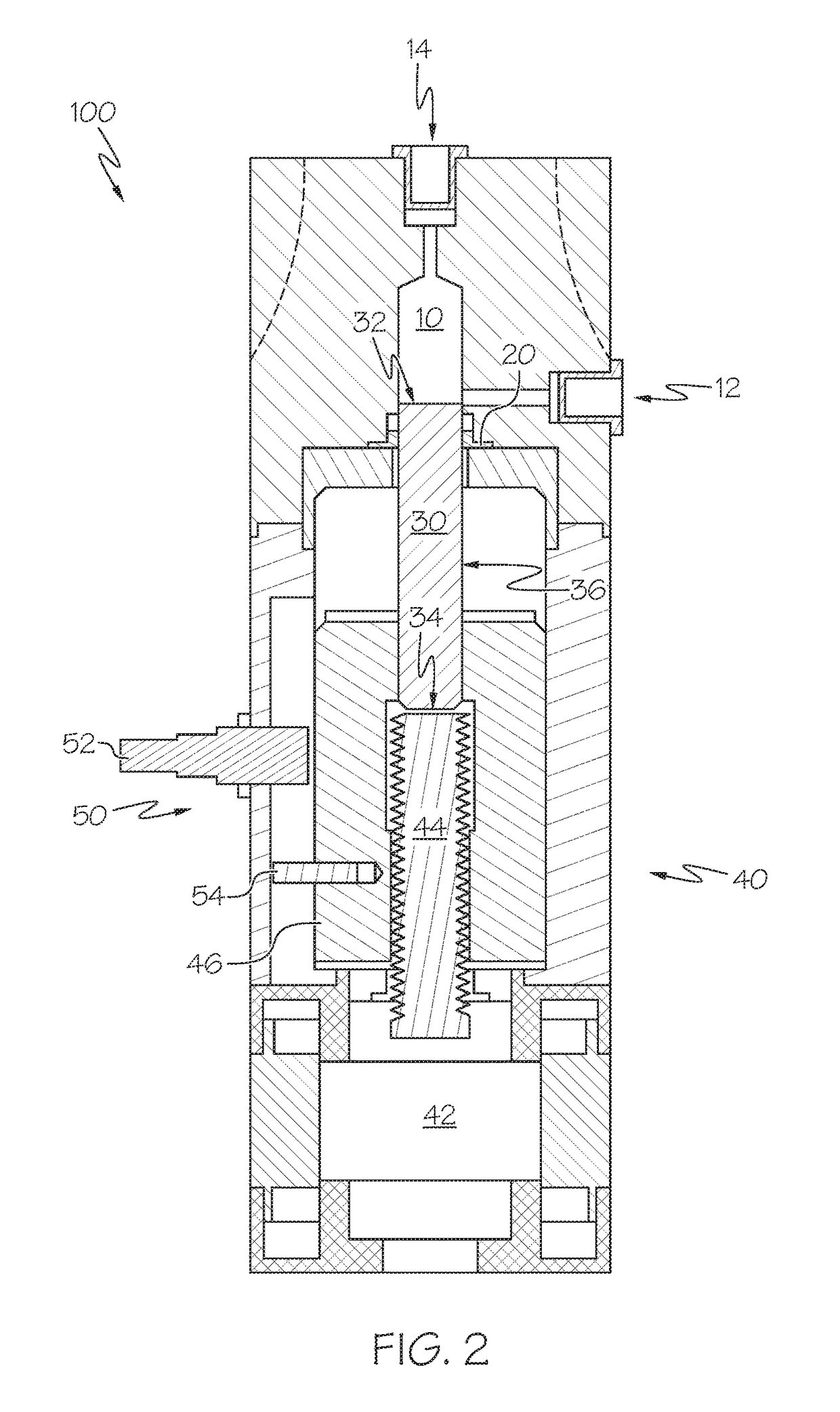Reciprocating piston pump and method of manufacture
a piston pump and reciprocating technology, applied in the field of reciprocating piston pumps, can solve the problems of reducing the contact angle of the piston pump, reducing the contact angle, and reducing the buildup behind the second seal. , the effect of increasing the contact angl
- Summary
- Abstract
- Description
- Claims
- Application Information
AI Technical Summary
Benefits of technology
Problems solved by technology
Method used
Image
Examples
Embodiment Construction
[0016]Referring initially to FIGS. 1 and 2, a reciprocating piston pump 100 is shown. The reciprocating piston pump 100 comprises a pump chamber 10, a piston seal 20, a hydrophobic piston 30 comprising a fluid engaging end 32, a seating end 34, and a longitudinal outer piston surface 36 extending between the fluid engaging end 32 and the seating end 34. The reciprocating piston pump 100 further includes a drive assembly 40 coupled to the seating end 34 of the hydrophobic piston 30.
[0017]As shown in FIGS. 1 and 2, respectively, the drive assembly 40 operates to reciprocate the hydrophobic piston 30 within the pump chamber 10 between full aspirate and full dispense positions. Additionally, the piston seal 20 forms an interface between the longitudinal outer piston surface 36 of the hydrophobic piston 30 and the pump chamber 10. Also, the hydrophobic piston 30 and the drive assembly 40 are configured such that the piston seal 20 interfaces with the longitudinal outer piston surface 36 ...
PUM
| Property | Measurement | Unit |
|---|---|---|
| contact angle | aaaaa | aaaaa |
| contact angle | aaaaa | aaaaa |
| thick | aaaaa | aaaaa |
Abstract
Description
Claims
Application Information
 Login to View More
Login to View More - R&D
- Intellectual Property
- Life Sciences
- Materials
- Tech Scout
- Unparalleled Data Quality
- Higher Quality Content
- 60% Fewer Hallucinations
Browse by: Latest US Patents, China's latest patents, Technical Efficacy Thesaurus, Application Domain, Technology Topic, Popular Technical Reports.
© 2025 PatSnap. All rights reserved.Legal|Privacy policy|Modern Slavery Act Transparency Statement|Sitemap|About US| Contact US: help@patsnap.com



